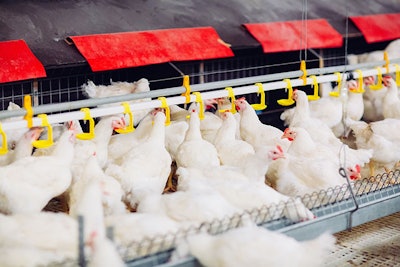
Poultry growers that monitor and recognize abnormal water consumption patterns could gain better insights into broiler behavior, welfare and health.
“One of the challenges we deal with when growing poultry is trying to figure out what’s happening when we’re not there,” Mike Czarick, senior public service associate, department of poultry science, University of Georgia, explained.
“We’re just always looking for information to give us some numerical feedback as to how the birds are doing during the course of the day because we’re not going to spend 24 hours a day in the house.”
Link between feed, water consumption in broilers
For example, during the first seven days of a chick’s life, its weight increases exponentially. Poultry growers want to closely track that progress. Bird weight scales are an option but can be difficult to find and expensive to obtain.
“Over the years, we’ve learned that feed and water consumption in a broiler are very closely related,” Czarick said, noting that a pound of feed consumed by a broiler approximately correlates to 1.8 pounds of water.
“If there’s a dip in water consumption, that means there’s a dip in feed consumption,” he added.
Ultrasonic water meters
Over the past few years, Czarick’s laboratory has focused on the development of an ultrasonic water meter that can track and monitor water consumption data in the poultry house.
Ultrasonic meters use sound waves to measure the flow of water, “basically just bouncing sound waves through the water in that pipe,” explained Czarick.
One of the biggest benefits of this is the ability to measure even low flow rates accurately. In addition, controllers attached to the water meter can provide data in 15-minute increments. This means that poultry growers can look for odd spikes or drops in water consumption that indicate changes in poultry health and welfare.
Water consumption data has even been used to help better understand the bird circadian rhythm and determine the optimal dark/light period for poultry welfare.
“This is a new technology for us that can help us better understand what our birds are doing. I think the better we understand what our birds are doing, the easier it is to manage them,” Czarick said.


















